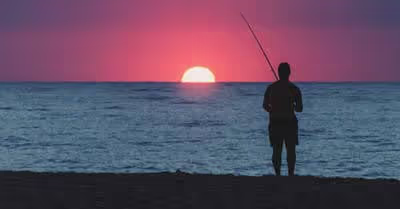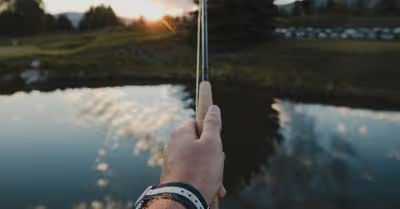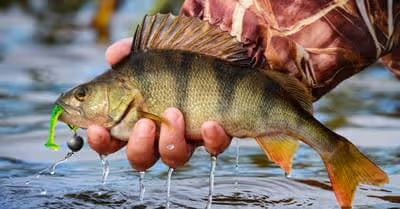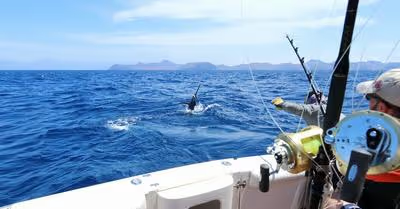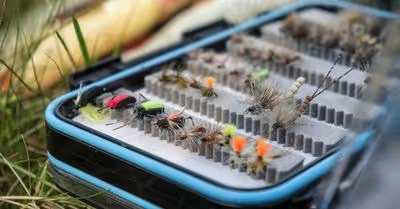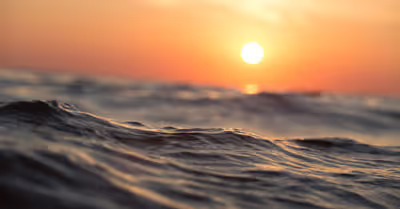Table of Contents
1. Where and When to Find Crawfish Lures
As the second most important meal (after prey fish) in the bass diet, crawfish can be found practically everywhere. In fact, they are prevalent in areas where bass love. Many water bodies are infested with crawfish but you may never see them unless you start pulling up water weeds and overturning underwater rocks. Again, they often change their colors to perfectly blend with the environment. They also tend to hide at the bottom during the day and only come out to forage in low light conditions at night.
And even if you were to sneak up on them, they can move back into their hideouts so quickly that you can’t really see them with your naked eyes. Despite the difficulty in spotting them, crawfish remain your golden ticket for catching bass given that they’re an important food source for bass in most waters. So if you’re planning to use these elusive critters to catch bass, it would only be in your best interest to learn as much as you can about crawfish.
In relation to their habitat, crawfish generally live at the bottom and tend to mate and brood in rocks between February and May. You can also find them in all sorts of places such as in mud (if there are no rocks around), flooded agricultural fields, ditches, nearly all ponds, rivers, and your favorite fishing spots. In essence, there are millions of crawfish lurking around in areas where you’ll find bass.
2. The Best Time to Use Crawfish Lures for Bass Fishing
Although you can use crawfish lures to catch bass throughout the year, the best time to aggressively go after bass using crawfish is in late winter, early spring, and early fall. Crawfish are typically very vulnerable during these periods. Again, other bass preys are very limited during these periods and bass won’t have a lot of choices.
Early spring is one of the best times to use crawfish lure to catch bass. This is because bass tend to feed up before the upcoming mating season. Crawfish also tend to be more active, thereby becoming vulnerable to bass.
Early fall is the mating season for crawfish, which means that there will be an increased number of their population. This will, in turn, attract bass to feed on them. Keep in mind that crawfish are rich in protein and energy (for every five pounds of crawfish that a bass consumes, it will gain a pound) and that’s why bass favor them for a meal all year long.
Additionally, crawfish will molt their shells in early fall and will be protected only by a softer shell. While they’ll be most vulnerable, they’ll remain reserved and hiding below rocks and weeds. As such, place your crawfish lures around rocks and structures and you’ll hit a jackpot.
In summer, crawfish will favor bottoms underneath dense weed beds or rocks. You can also find them under logs, holes, burrows or under anything else. Keep in mind that crawfish bites will be very slow during summer as bass tend to become lethargic. So instead of presenting crawfish lures for bass in summer, you can try pumpkin-colored jigs. You can also use brown or green soft plastics when the water is clear and bolder colors such as purple or blue when the water is stained.
Crawfish, like many other species of crustacean, typically hibernate in mud in late fall in anticipation of winter. They will then move out of the mud and become more active at the end of the winter as they gravitate for the sun and to renew their energies for the upcoming season.
3. The Ideal Temperatures, Depths, and Circumstances for Using Crawfish Lures
When it comes to using crawfish, whether live or imitated, it’s important that you present them exactly how they would appear to bass in their natural setting. For this reason, it’s significant that you take various factors into consideration if you want to successfully catch bass using crawfish.
In terms of depth, you should imitate crawfish at any depth. Using crawfish lures, you can catch bass at any depth or temperature. This is because bass favor crawfish as a meal and will bite as long as they’re available. However, keep in mind that crawfish prefer perfectly oxygenated water and that’s why you’ll find them from the shoreline to nearly 20 feet deep. Again, they rarely make seasonal migration movements but may migrate if their current habitat is stressful.
The best time to use crawfish lures to catch bass is when water temperatures are around 50 degrees Fahrenheit. During these periods, you can consider using orange or red lures that can perfectly imitate crawfish appearances.
4. The Best Colors for Crawfish Lures
Like chameleons, crawfish have light-sensitive cells that automatically adjust to the colors that the crawfish are exposed to. In other words, crawfish have the ability to automatically adjust their colors to match the color of their environment. While the primary colors are black, grey, green, and brown, they can adapt to various secondary colors including orange, red, amber, yellow, and blue.
So when using artificial crawfish lures to catch bass, it’s of great importance that you use lures that nearly match the color of the water where you’re fishing at. You can also consider vegetation color or the general color of the environment where you’re fishing at. As such, it may inappropriate to use very bright crawfish lures if you’re planning to fish for bass in the cover of darkness. You can, therefore, use opaque or slightly darker colors that would typically look like crawfish in the dark.
You should consider going with natural crawfish colors when the water is clear with at least 8 feet of visibility. You can, however, choose bright red or orange colors if the water is stained and murky. Do not forget to move these lures fast along the bottom while performing sudden pauses on the fishing line. This is to draw a reaction or a strike from a bass that can hear but cannot see the lure until its right next to them.
5. Using Crawfish Lures for Various Types of Bass
There are various types of bass and it would only be ideal if you know how to use crawfish for them.
Largemouth Bass
Largemouth bass prefer fish preys to crawfish throughout the year except in late winter and early spring. However, they’ll prefer crawfish before adulthood when their diet shifts to larger prey such as fish and frogs. Largemouth bass will also hit up crawfish when the water temperatures reach 50 degrees Fahrenheit until when the crawfish start moving to shallow waters.
Spotted Bass
They have similar preferences to largemouth bass when it comes to feeding on crawfish. So if you want to target them using crawfish lures, the best time would be in late spring and early winter when they’re moving from deeper waters to shallow depths. All in all; crawfish form a big part of spotted bass’s diet on shallow waters, especially when fish preys are not around.
Smallmouth Bass
These are the main bass species to target using crawfish lures. Late spring and early winter is the best time to use crawfish lures to target smallmouth bass. They also feed on crawfish all summer long but you can also target smallmouth bass in early fall.
6. Ideal Locations to Use Crawfish Lures for Bass
Shallow Grass – This is the best place to throw crawfish lures, especially in late winter and early spring. This is because bass will typically move to these areas to feed on crawfish as the water temperatures begin to warm up. The red-colored lures will work best. You have to ensure that the lures move quickly but with quick pauses on your reel. Make sure that you place the lures right on top of the grass.
Rocks – As the main territory for crawfish, you can target bass between rocks especially in seasons when crawfish are molting. So if your fishing area has rocks that go deeper into the water, this would be a great location to target bass that are looking to feed on crawfish. You can consider using crawfish-style jigs and soft plastics as they’re the best for fishing for bass between rocks. This is because bass will aggressively bite these lures as they deflect off the rocks. Red-colored lures remain a great choice for these locations.
Deep Bottoms – Bass will prefer deep waters and hard bottoms in late fall through to mid-winter. As such, you should target holes, hard-bottom humps, as well as ledges that are nearby to shallow waters. You can use finesse-style crawfish lures that are a little slow but jigs will work best.
Current Breaks – If you’re planning to fish for bass in rivers, the best place to target them is alongside the currents in slow-moving whirlpools. The bass will be waiting just next to the current facing upstream. As such, use lipless crankbaits for deep waters and squarebills for shallow waters. You should remember that these lures would work best in early spring and early fall.
7. The Best Types of Crawfish Lures for Bass
Go With Real Crawfish
This is probably the best way to use crawfish lures to fish for bass. You should hit the bottom of the rocks and collect some real crawfish. While they may vary widely in terms of colors and sizes, this is a sure way of getting the bass to bite your fishing line.
Jigs
These are among the best artificial lures for imitating crawfish. That’s why you must have them when out there fishing for bass. When it comes to choosing the right type of jig, you should put into consideration the color of your fishing environment, the season and other factors. However, make sure that the jig you choose has double tails or craws to make them look exactly like a fleeing crawfish.
Soft Plastic
These should be designed to look exactly like the real crawfish in terms of color, size, movement, and body structure. So when choosing soft plastic crawfish lures, make sure that you go for something that would exactly mimic the crawfish in the area you’ll be fishing at. Again, you can choose to use soft plastics as trailers for jig heads. This will help you create a more sizeable profile and increased movement. More importantly, make sure that the color of the soft plastic mimics the natural color of the crawfish in your fishing area.
Crankbaits
Although crankbaits may not be the ideal choice if you want to mimic the exact look and body structure of crawfish, they can perfectly mimic the noise and movement of crawfish, especially when fishing between rocks. Crankbaits are also perfect if you want to fish at various depths as they’ll work best in all depths. Just make sure that you choose crankbaits that somehow look like crawfish.
Conclusion
Crawfish lures should be a must-have in your fishing tackle box if you want to catch some bass. This is because crawfish are generally favored by bass and are readily available in most areas where you’ll likely find bass. As such, choosing crawfish lures that mimic the size and color of the real crawfish may increase your chances of catching bass. In the same way a paintbrush is integral to an artist, crawfish lures should be an important cog of your fishing adventure if you want to catch some worthy bass!
Recent Articles



